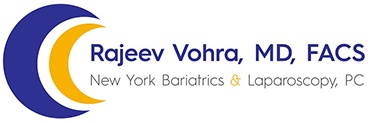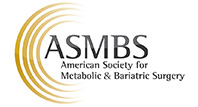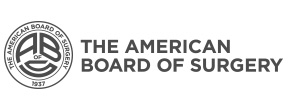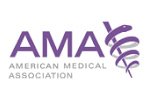General Laparoscopic Surgery
Advanced Laparoscopic Procedures
(Minimally Invasive Surgery)
New York Bariatrics & Laparoscopy uses advanced laparoscopic procedures to perform many complex surgeries with minimal incisions, scarring and recovery time. With the use of a laparoscope, surgeries that once required large incisions and extensive hospital stays can now be avoided. The laparoscope, a thin, flexible tube with a miniature camera on the end, along with slender operating instruments, are inserted through several small incisions of approximately one half inch or less. The camera will then transmit an image of the organs onto a television monitor, allowing us to see and operate without the need for a large incision.
Dr. Vohra performs many complex surgeries with minimal incisions, scarring, and patient recovery time. We work closely with each patient to explore surgical options and determine whether that person is a good candidate for laparoscopic surgery. If you would like to learn more about our minimally invasive laparoscopic techniques, please contact our office at .
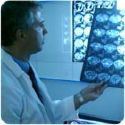
Gallbladder
Obstruction of the bile flow by gallstones in the gallbladder or bile ducts causes abdominal pain, nausea, and vomiting following meals and can lead to severe infections and inflammation. Laparoscopic removal of the gallbladder involves four small incisions in the abdomen. Patients are usually able to return home within one day following surgery and experience minimal postoperative pain.
Inguinal Hernia
 An inguinal hernia is an intrusion of the intestines into the groin area through a weak point in the abdominal wall. It can cause pain and pressure on the groin, as well as symptoms of nausea and constipation. Laparoscopic surgery for inguinal hernias involves small incisions in or just under the navel and in the lower abdomen.
An inguinal hernia is an intrusion of the intestines into the groin area through a weak point in the abdominal wall. It can cause pain and pressure on the groin, as well as symptoms of nausea and constipation. Laparoscopic surgery for inguinal hernias involves small incisions in or just under the navel and in the lower abdomen.
Ventral/Incisional Hernia
A ventral/incisional hernia is one located on the front abdominal wall that occurs on the site of a previous surgical incision. Ventral/incisional hernias are most common in patients who have had more than one incision in the same site and who are overweight. Laparoscopic surgery offers an effective solution repairing of ventral/incisional hernias involving minimal additional incisions.
Colon Surgery
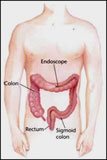 Surgery for the colon (large intestine) can be necessary to treat a number of intestinal disorders and diseases. It may be chosen to treat:
Surgery for the colon (large intestine) can be necessary to treat a number of intestinal disorders and diseases. It may be chosen to treat:
- A diseased portion of the intestine
- Cancer or pre-cancerous polyps
- Ulcerated cholitis
- Diverticulitis
- Rectal prolapse
- Inflammatory bowel disease
- Multiple other conditions.
Laparoscopic colon surgery can often be used to treat these conditions with great success. Like other types of minimally invasive surgeries, laparoscopic colon surgery involves several small incisions made in the abdomen that allow the surgeon to remove the diseased portion of the colon and reattach the healthy ends. Our surgeons perform both standard open incision techniques, as well as minimally invasive laparoscopic colon surgery procedures.
Adrenal Surgery
Benign growths on the adrenals are a fairly common occurrence however, if these tumors grow too large, cause hormone over-secretion, or become cancerous, the adrenal gland may need to be removed (adrenalectomy). Standard surgery to remove an adrenal gland involves a large incision through the ribs. With a laparoscopic adrenalectomy, however we are able to avoid the chest and remove the adrenal with four small incisions.
Nissen Fundoplication (Anti-Reflux Procedure)
 Laparoscopic Nissen fundoplication is a complex and highly specialized procedure, performed by very few surgeons in the United States. Dr. Vohra is proud to offer this alternative to his patients suffering from chronic gastroesophageal reflux problems. Nissen fundoplication is surgical repair of the valve separating the esophagus from the stomach. It is performed to relieve symptoms of chronic severe heartburn. The acid and alkaline fluid from the stomach can damage the lower esophagus and lead to the development of a pre-malignant condition known as “Barrett’s esophagus.”
Laparoscopic Nissen fundoplication is a complex and highly specialized procedure, performed by very few surgeons in the United States. Dr. Vohra is proud to offer this alternative to his patients suffering from chronic gastroesophageal reflux problems. Nissen fundoplication is surgical repair of the valve separating the esophagus from the stomach. It is performed to relieve symptoms of chronic severe heartburn. The acid and alkaline fluid from the stomach can damage the lower esophagus and lead to the development of a pre-malignant condition known as “Barrett’s esophagus.”
Laparoscopic surgery can be used to repair this condition, with far less blood loss during surgery and a shorter recovery period than required by traditional open surgery
Spleen
Laparoscopic removal of the spleen (laparoscopic splenectomy) is a minimally invasive surgery performed to remove a spleen that is dangerously diseased or ruptured. Laparoscopic removal of the spleen for cases of trauma or disease can be accomplished with several minimal incisions under general anesthesia. Patients are generally released from the hospital after an overnight stay and able to return to light daily activities almost immediately.
EGD/Upper Endoscopy
An upper endoscopy (also called EGD for esophagogastroduodenoscopy) is a procedure used to examine and diagnose problems with the upper digestive system. In addition, it is frequently used to diagnose problems involving swallowing, nausea, vomiting, indigestion, and abdominal or chest pain. The procedure also enables small biopsies through the endoscope to test tissues for malignancy, parasites, or infection.
For information on any of these procedures, please feel free to contact New York Bariatrics & Laparoscopy, PC at
